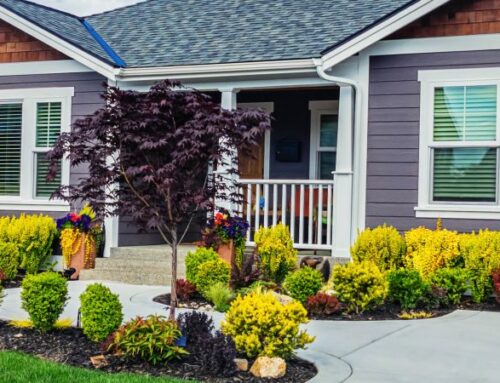With the changing of the seasons in Nevada County comes the want to change something about your home. A fresh coat of paint can make a huge difference. However, the price and labor of a painting update can be intimidating for some homeowners. Here are six ways you can you save time and money on your next painting project.
Tip #1: Check Local Recycling Centers
Many recycling and hazardous waste centers take in old, unused cans of paint from local residents and businesses. Paint has a long shelf life, so it’s not uncommon to find usable paint at these centers. Best of all, paint from recycling centers is usually free. If you are in Grass Valley area, you should stop by the McCourtney Road Transfer Station and Recycling Center.
Tip #2: Illuminate the Walls
Professional painters often bring their own spotlights and clamp lights to jobs. A clamp light or similar illumination tool will help spot mistakes before the job is done. Also, you can use lamps or other portable illumination tools you might have around the house to illuminate the area. Be sure to open up any blinds or curtains to add in some extra light. All that light will help you spot bubbles, unevenness, or the old color still peeking through the new color. Addressing mistakes as you go will save you time and money later.
Tip #3: Use a Primer
A primer as your base layer will help your paint adhere to untreated surfaces like raw wood or unfinished drywall. The use of primer is also good if you’re dealing with stained or rough surfaces that might require multiple coats of paint to gain an even finish. You can always check with your local home improvement store to see what primer they recommend.
Tip #4: Buy Better Paint
Professional painting services rarely opt for cheap paint, unless specifically directed to do so by the customer. Most cheap paints won’t shine as brightly or look as smooth as higher-quality alternatives. Using lower quality paints will also require multiple coats of paint to achieve a finished look, which can increase costs. Most high-quality paints, including those which feature a primer in the mixture, go on in one coat. They will cost more per can, but completing your job will require less paint.
Tip #5: Don’t Rush to Select a Color
Consider how your color will work with your space before making a purchase. Being sure about your color choice will save you time and money. Rushing into a color selection can result in a touch up or repainting altogether. Always be sure that your new color matches with the flow of the whole house. This includes the room’s flooring color, the furniture in the room, and paint colors in other rooms. Also, always be sure to test your paint color out before fully committing to it. You don’t want to spend the time and money on a color that you end up disliking.
Tip #6: Know Your Finishes
Lastly, make sure you pick the right finish for the room. Here are the four major finishes:
- Flat: Great for interior walls and ceilings.
- Eggshell: Ideal for living rooms, bedrooms and dining room walls as it is easy to wash and touch up.
- Satin: The easy-to-clean nature of satin finishes makes it perfect for high-traffic areas of the home.
- Semi-Gloss/Gloss: Reserve this finish for trim, molding, cabinets, kitchens and bathrooms due to its great coverage and washable, durable nature.
Follow these simple tips and you’ll not only find yourself saving money at the hardware store or with your professional painters, but you’ll also save time by not having to repaint or frequently touch up your newly painted surfaces.





